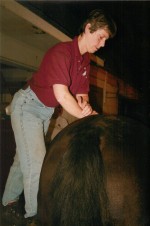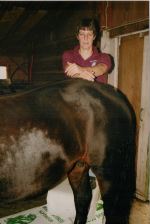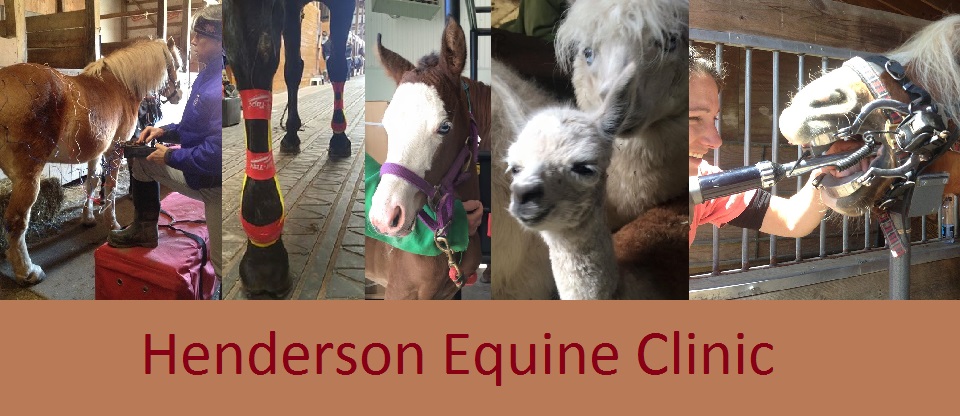Chiropractic Care
Dr. Bonny Henderson completed certification by the International Veterinary Chiropractic Association in 2006. Over the past several years she has performed chiropractic adjustments on countless horses, donkeys and even small animals. The benefits to chiropractic adjustments are many, including free range of motion and decreased pain during exercise.
 How do you know your horse needs to be adjusted? To truly know, he must to be examined. This allows his spine and extremities to be put through range of motion testing at the very edge of the joints normal limits to identify fixations. However, if you suspect there is a problem, it should definitely be checked out. Overt signs of problems include head tossing, a consistent abnormal stance or change in movement or a change in behavior. Additional signs may include resentment while being tacked up or worked, poor performances, failure to pick up leads, or slower times.
How do you know your horse needs to be adjusted? To truly know, he must to be examined. This allows his spine and extremities to be put through range of motion testing at the very edge of the joints normal limits to identify fixations. However, if you suspect there is a problem, it should definitely be checked out. Overt signs of problems include head tossing, a consistent abnormal stance or change in movement or a change in behavior. Additional signs may include resentment while being tacked up or worked, poor performances, failure to pick up leads, or slower times.
How does chiropractic adjustment work?
The theory of chiropractic treatments is very simple. If a motion unit (one specific joint and all the surrounding structures of that joint) is fixed (cannot move) the horse cannot function properly until that motion unit is restored to normal motion and function. A motion unit may be completely fixed (no motion in the joint) or partially fixed (a decrease in the normal range of motion in that joint). Both types of fixation cause the horse to compensate, which requires extra energy. Your horse may have back pain due to a vertebral fixation causing discomfort and compensation. He will require more energy to use different muscles and joints to compensate and perform. Ultimately this leads to fatigue, poor performances, added seconds and over time, if uncorrected, to injuries.
How is chiropractic adjustment performed?
A chiropractic adjustment is the application of a very small localized thrust with a limited, fast force, applied along a specific line of correction, to a specific location on a bone in a specific joint. That is the long way to say that the force does not have to be huge, just applied very specifically and given fast. The adjustment causes movement in the portion of the joint that is fixated. The movement may be either motioned and held or motioned and allowed to recoil. Either one frees the motion unit and allows it to begin functioning properly. Returning the normal range of motion to a joint allows the horse to use themselves properly, with less energy, and it also allows the horse's body to start retraining itself to maintain the bones in proper alignment. Although horses are large animals, the force is applied so quickly and specifically that it travels through the muscle mass and affects the joint. The muscle mass will dull the audible sound of the joint releasing. Because of this, you will not hear the popping sound you hear when you are adjusted, but the joint does release and the motion is restored.
 All competitive horses are at susceptible to fixations and will benefit from a chiropractic exam. It will identify fixations and remove them so that your horse can compete to the best of their ability. In reality, horses will be more comfortable and healthy if they are in correct alignment. It is never wrong to have your horse examined, even if he is a retired campaigner. It may help him handle his arthritis better. This is true for your dogs also. If they go on trail rides with you or are having trouble getting about, an exam would identify and correct problems.
All competitive horses are at susceptible to fixations and will benefit from a chiropractic exam. It will identify fixations and remove them so that your horse can compete to the best of their ability. In reality, horses will be more comfortable and healthy if they are in correct alignment. It is never wrong to have your horse examined, even if he is a retired campaigner. It may help him handle his arthritis better. This is true for your dogs also. If they go on trail rides with you or are having trouble getting about, an exam would identify and correct problems.

